Ancestry & Evolution

‘An ancestral form of art’: Homo naledi orchestrated elaborate funerals for their dead — but they had brains the size of a chimpanzee
A team of paleontologists believe they have found evidence of ceremonial burials dating back 240,000 years, long before our species, Homo sapiens, came ...

Human pedigree through the ages: 14 reasons why people may want to know more about their family history
Pedigrees have long been the backbone of genetics. Not surprisingly, therefore, we tend to think of pedigrees as primarily medical ...

Most animals are born to walk. Why are humans so helpless at birth?
Big brains and narrow hips were long blamed for the relative helplessness of human babies at birth. But the energy ...
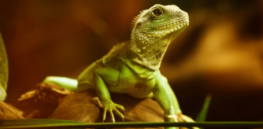
The myth of the reptilian human brain is tenacious – but wrong
The reptilian brain is often blamed for our primitive instincts that can trigger fight, flight or freeze responses in us ...

Cold adaptation: Why did it take humans 30,000 years to adapt to chilly climates?
Ancient DNA has helped scientists reconstruct evolution and adaptation among humans living in Eurasia over the course of 30,000 years ...

What caused the Habsburg royal family’s jaw deformity? Blame inbreeding
Today, the Habsburgs are all but forgotten from mainstream public consciousness, apart from one notable feature: the famous Habsburg Jaw ...

Homo futurae: Evolution and genetic manipulation could create superhumans, parahumans and transhumans. Here’s what that means
People continue to evolve even as our societies become more interconnected. What are we becoming now and what might we ...

Should we bring the wooly mammoth and other species back from extinction — Yes or no?
A scientist helping to bring back the woolly mammoth debates two Stanford professors who argue that we are unprepared to ...

Reality check: Are there ‘intelligent’ trees that ‘talk’ to each other?
Is it true that trees talk to each other? A fantastic idea and a popular science book that has sold ...
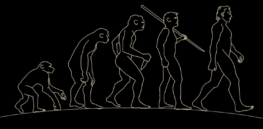
Humanity originally evolved in Africa — but new evidence shows we came from two distinct groups of hominids
A new fascinating study reveals humans were living in different regions of Africa, migrating from one region to another and ...

10% of the human genome is made up of viruses. Here’s how they helped shape our species’ evolution
Devastating pandemics, viruses have also played an important role in human evolution – and without them you wouldn't be here ...

Is your dog your doppelgänger? Why pets develop human-like features — or vice versa
Why do animals living with humans evolve such similar features? A new theory could explain ‘domestication syndrome’ ...
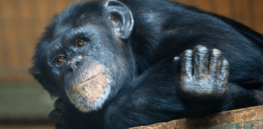
Chimpanzee ‘language’ deciphered by scientists
Scientists have moved one step closer to decoding the languages that animals like chimpanzees use to communicate ...

Earliest human footprints ever discovered trace back 300,000 years to first human species to live in cold weather and build shelters: Homo heidelbergensis
Archaeologists connect world's oldest footprints to humans: Scientists believe these footprints helped depict the ecological makeup of the area at ...

Viewpoint: How to interpret crude racial categories that have historically defined human biological variation
Racial categories are crude maps imposed on human biological variation. How do scientists square them with genetics? ...

What kick-started the evolution of our complex human brains?
A chance rearrangement of the human genome over a million years ago probably kick-started the evolution of modern humans from ...

Neanderthal links: Here’s how nose shape evolved in modern humans
Humans inherited genetic material from Neanderthals that affects the shape of our noses, finds a new study led by UCL ...

Haeckel v. Miklucho-Maclay: The 19th century battle between a race scientist and his indigenous-rights supporting protégé
Ernst Haeckel pushed race science as his little-known protégé Nikolai Miklucho-Maclay defended Indigenous rights ...

Got the marijuana munchies? Innovative worm study may help solve the mystery
University of Oregon neuroscientist and professor Shawn Lockery recently published a paper on the impacts of cannabis on worms ...
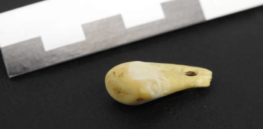
Prehistoric jewelry: Scientists pull 20,000-year-old human DNA from necklace made from deer teeth using new extraction technique
The innovative method for obtaining genetic material allows us to link archaeological artifacts with the people who touched them ...

Balding throughout the ages
Balding is really common, affecting more than 50% of men. It’s also physically inconsequential (bald men live just as long ...

70% of gambling behavior may be driven by genes. A new genetic test may show whether you’re at risk
Studies have shown that our genes may be up to 70% responsible for gambling behavior. Now a new genetic test ...

Human evolution may have more to do with genetic material we lost from our primate ancestors than what we gained
A new study explores the significance of the genetic information absent in the human genome compared to other primates ...
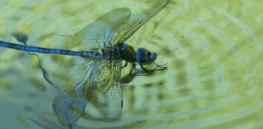
Why are there so few insects in the world’s oceans?
Scientists from Tokyo Metropolitan University have proposed a hypothesis for why insects are so rare in marine environments ...

Viewpoint: ‘The Amazon Rainforest is not only a natural heritage, but also a biocultural heritage.’
Until the turn of the 21st century, the ruling paradigm was that the soil in the Amazon was too poor ...

How Africa evolved as the crucible for early human transition from forest-inhabiting fruit-eaters to savanna-dwelling hunters
That humans originated in Africa is widely accepted. But it’s not generally recognised how unique features of Africa’s ecology were ...

How blinking contributed to human evolution
Researchers investigated the reasons behind the mudskipper’s blinking behavior by considering the roles that blinking plays in humans ...

